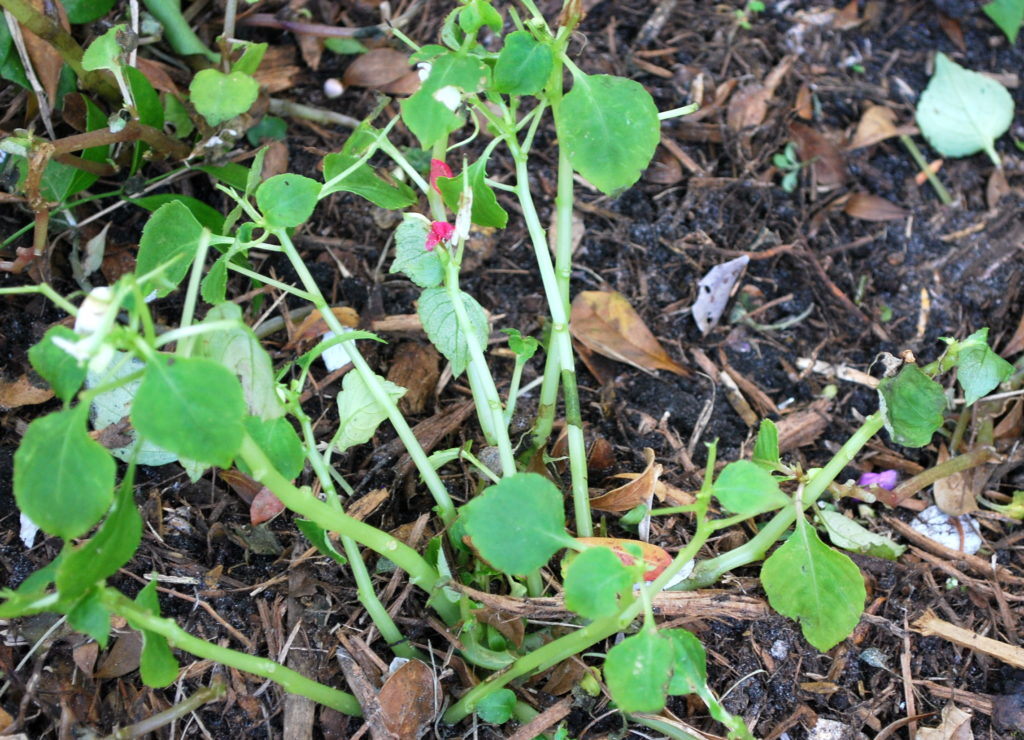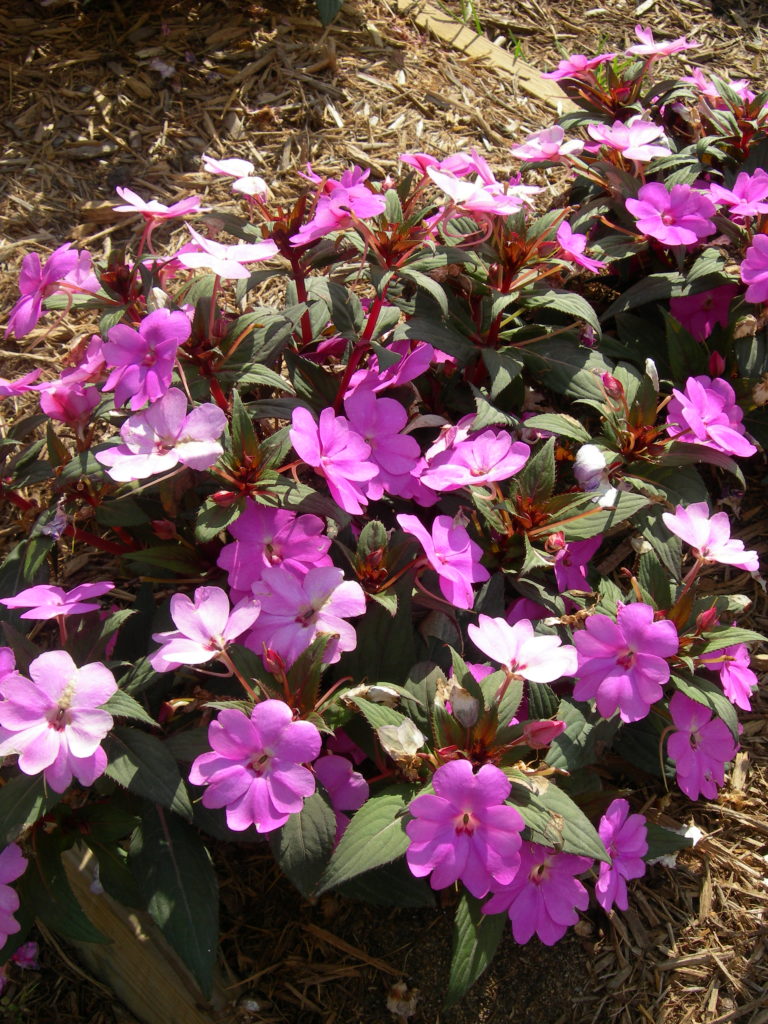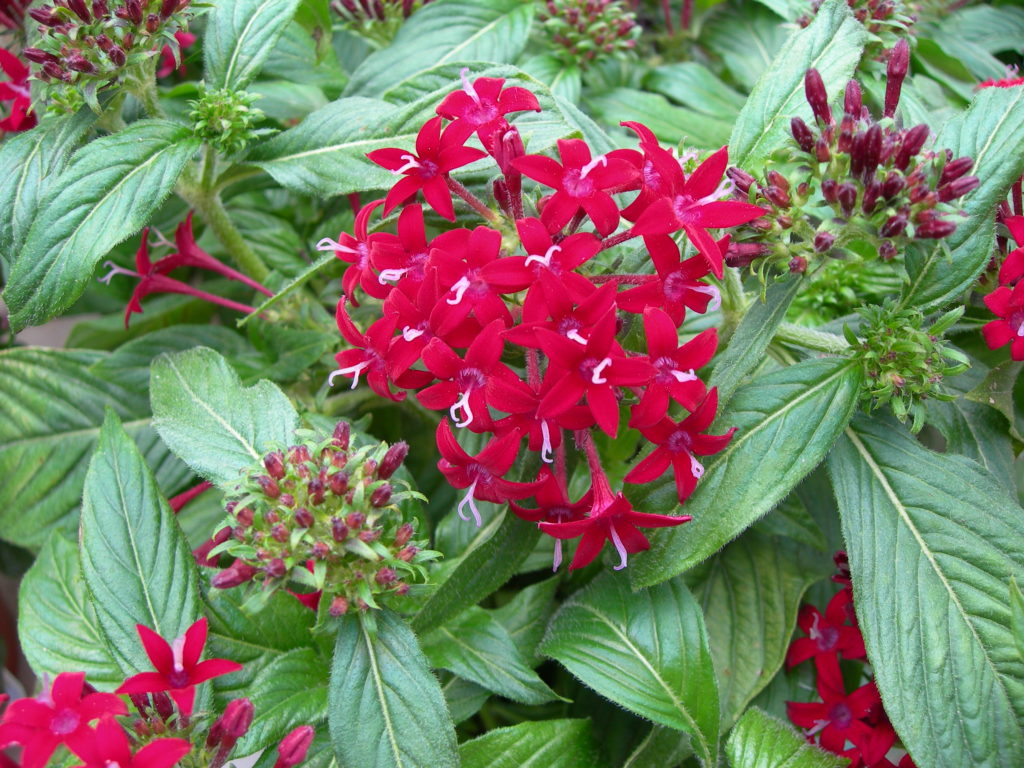“Impatiens season is coming,” I groaned, “and there is nothing I dislike more than seeing every home, business, community entrance, and government building planted with rows of red and white impatiens. What’s more, once planted, the sprinklers are turned on every day across the whole yard, wasting water!” The nurserywomen across the table scowled at me and said, “Carol, it’s The Season; everyone who visits the Land of Flowers (Florida) wants to see flowers, and impatiens are good flowers, Get Over It! However, why don’t you remind folks of the right place and way to maintain impatiens? We will all win. I can still sell the easiest of flowers, folks can plant and enjoy them without a lot of work, and just maybe you will stop griping about wasted water and declining lawns and shrubs from too much water.” OK, I give up. Here is a top tip list about planting impatiens.

Downy mildew is a water mold more closely related to algae than fungi. It makes two types of spores. One spore type moves with water such as irrigation or splashing rain. This spore is what spreads the disease quickly. The other kind of spore forms inside plant tissue, and it can stay dormant for years in the soil. 
If you must plant impatiens, plant them in the shade, and use New Guinea hybrids. Performing best with reduced light, New Guineas will tolerate full sun, and most varieties are tolerant of the disease downy mildew. Best growth is achieved with regular irrigation and frequent fertilization.
- Select the right variety. Since 2011, the disease, downy mildew, has wreaked havoc on plantings of traditional impatience varieties. Research and plant breeding have produced cultivars with limited downy mildew resistance.
- The best choice as of 2021 is New Guinea impatiens that are very disease tolerant.
- A couple of resources about impatiens and downy mildew; University of Florida Impatiens Downy Mildew and Proven Winners The Sky is Falling – Impatiens Downy Mildew.
- Choose to plant impatiens every third year. Crop rotation is a tried-and-true practice, and it still works for commercial agriculture, and it can work in the home garden. Many pests are crop-specific; they prefer to live and reproduce on one specific type of plant. By changing the plant from one season or year to the next, the pest is starved or deprived of shelter or breeding location, reducing the pest population.
- Location, as they say in the real estate business, is the key to success. Impatiens wallerana was discovered in the tropical forest of east Africa, an understory plant. Plant impatiens in the shade or part shade, at least for the afternoon. Use this top tip for planting impatiens successfully.
- Sun vs. Shade. Use New Guinea impatiens if the beds must be located with more sun. However, even this robust import does best with a bit of afternoon shade. If the bed you have in mind for impatiens is in full sun, try petunias or pentas instead.
- Location again, plant impatiens in beds by themselves. They look best in large groups, and maintenance can be customized for the plants in the bed.
- Soil. If it is possible to choose the type of soil, then moist, well-drained soil is ideal. For annual beds only, mix in organic compost to hold water and nutrients.
- DO NOT PILE POTTING SOIL OR ANY OTHER SOIL MIX AROUND AND/OR ON TOP OF TREE ROOTS OR OTHER PLANT ROOTS IN THE LANDSCAPE.
- This practice damages the existing plants and dries out quickly, requiring more water.
- DO NOT PILE POTTING SOIL OR ANY OTHER SOIL MIX AROUND AND/OR ON TOP OF TREE ROOTS OR OTHER PLANT ROOTS IN THE LANDSCAPE.
- Water. Impatiens prefer moist conditions with regular applications of water. The use of low-volume irrigation systems designed for the annual bed ensures that water can be delivered as often and as much as the plants need.
- Such systems used to require the services of an irrigation professional, and it is still an excellent choice to call one. Still, do-it-yourself kits are available at most nurseries and garden centers at very reasonable costs.
- If you must have impatiens, plant them in a separate irrigation zone. Don’t ruin the rest of the landscape with too much water just for a few flowers.
- Fertilizer. Impatiens is a heavy feeder; at the time of planting, use a slow-release product that will provide nutrients during the bed’s lifespan. As the plants grow, supplemental applications of liquid fertilizer keep them in top blooming condition. Read and follow all label directions for mixing and applying.
- Mulch is a controversial subject. Many landscape professionals do not like to use mulch in annual beds because the plants are often replaced, and mulch makes the removal and re-planting more difficult. You know me, I say mulch everything; mulch conserves moisture, reduces diseases from soil/water splash, and suppresses weeds. However, with the close planting that occurs in impatiens’ beds, mulch is optional.
- Timing. Impatiens are planted as a summer annual in most of the country. In their native habitats, they are short-lived perennials. In warm-season areas such as central and south Florida, they are best used as a winter annual. Plant when the nights cool off, Oct – Nov, and remove them when they warm up, April-May.
- Color. Try something other than red and white. Impatiens come in lots of colors. Here’s your chance to be creative.
- Containers. So, if you now realize that your yard is not the right place for impatiens, you can still enjoy them in containers. Impatiens grow happily in containers in the shade; try some on the patio or balcony for a splash of lovely winter color.

Finally, try a different flowering plant. There is a multitude of flowering plant species that can produce a beautiful flowering display. Suggested winter flowering annuals and perennials for warm-season areas include begonia, kalanchoe, geranium, calibrachoa, dusty miller, ornamental cabbage, snapdragons, Jonny-jump-up, pentas, salvia-perennial and annual, sweet alyssum, and petunia.
This article first appeared in the Treasure Coast Newspapers.
Leave a Reply